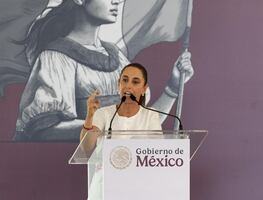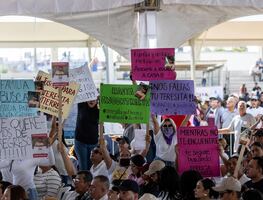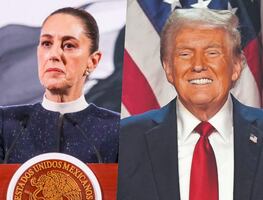Más Información

Jóvenes mexicanos pasan más de 2 mil horas al año en el teléfono; OCDE alerta sobre su impacto en la salud mental

Sergio Gutiérrez Luna destaca aprobación de 25 reformas en la 66 Legislatura; "Un logro histórico para la 4T", señala

Secretario de Agricultura reafirma defensa del maíz blanco; "Seguiremos apoyando la producción nacional no transgénica", afirma

¿Maíz transgénero? Rubén Rocha corrige desliz durante discurso en Sinaloa; destaca importancia del maíz blanco

Sheinbaum asegura apoyo total a Sinaloa para enfrentar violencia; "Nunca los vamos a dejar solos, aquí está la presidenta"

Dictan 600 años de prisión a "El Negro" Radilla y "El Cone"; responsables de secuestrar al hijo de Javier Sicilia
On July 1st, 2018, Mexico will define its future, mainly through the election of the next Mexican President, members of both Congress Chambers, local legislators in 30 out of the 32 states comprising the Republic, and 9 state Governors.
Never in the history of our country have Mexican citizens been called to vote, simultaneously, on such a large number of public offices before, 3,406, and in some states this number increases due to the election of local administration members, which brings the final figure up to 4,006 .
This is why Federal and local electoral processes are breaking records: the electorate is close to 87.8 million citizens while the number of candidates running reaches to more than 13,000 – yet the actual final figure depends on the electoral coalitions and alliances.
What about resources?
Of course, something of this magnitude requires both, financial and human resources to be feasible. The amount of public funding allocated for the 2018 electoral process – including TV and radio advertising – is equal to MXN$26,000,000 (USD$1,307,508 approx.), also a record sum.
As for the human resources, that falls into the hands of the National Electoral Institute , known in Mexico as the INE. This Institute has the challenge of handling the registration of all candidates, budget control, and settling electoral disputes which can go from excessive campaign spending to electoral fraud . The expectation here is that across the entire country thousands of complaints and appeals will be filed, some arising from the natural political confrontation between candidates.
Yet the challenge of the Institute doesn't end here. They also need to coordinate with local electoral bodies. Out of the 30 states with current electoral processes, 7 will hold elections on several levels: Governor, local Congress, Town Halls, and community administrations.
To meet the demand, 156,00 voting booths will be installed across the country, and the INE is required, by Law, to hire thousands of electoral trainers to convince, and train, 1.4 million citizens to serve as polling officials on election day.
And this is all just for the process within the country. For this general election, a new model has been implemented so citizens abroad are able to vote but we'll tell you more about that in our upcoming article on Voting Abroad.
With this panorama, is no wonder the 2018 General Election is considered one of the most important electoral challenges Mexico has ever faced.
am





